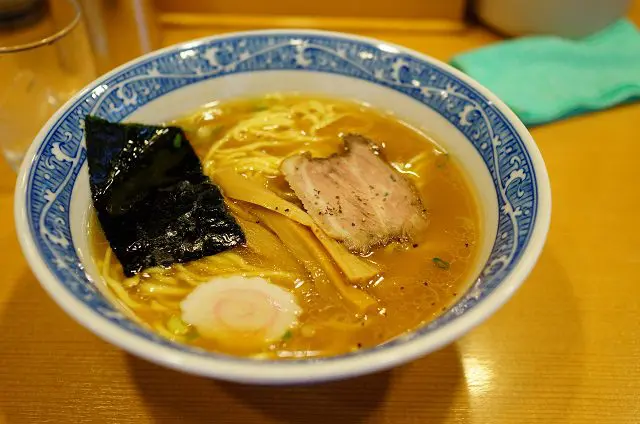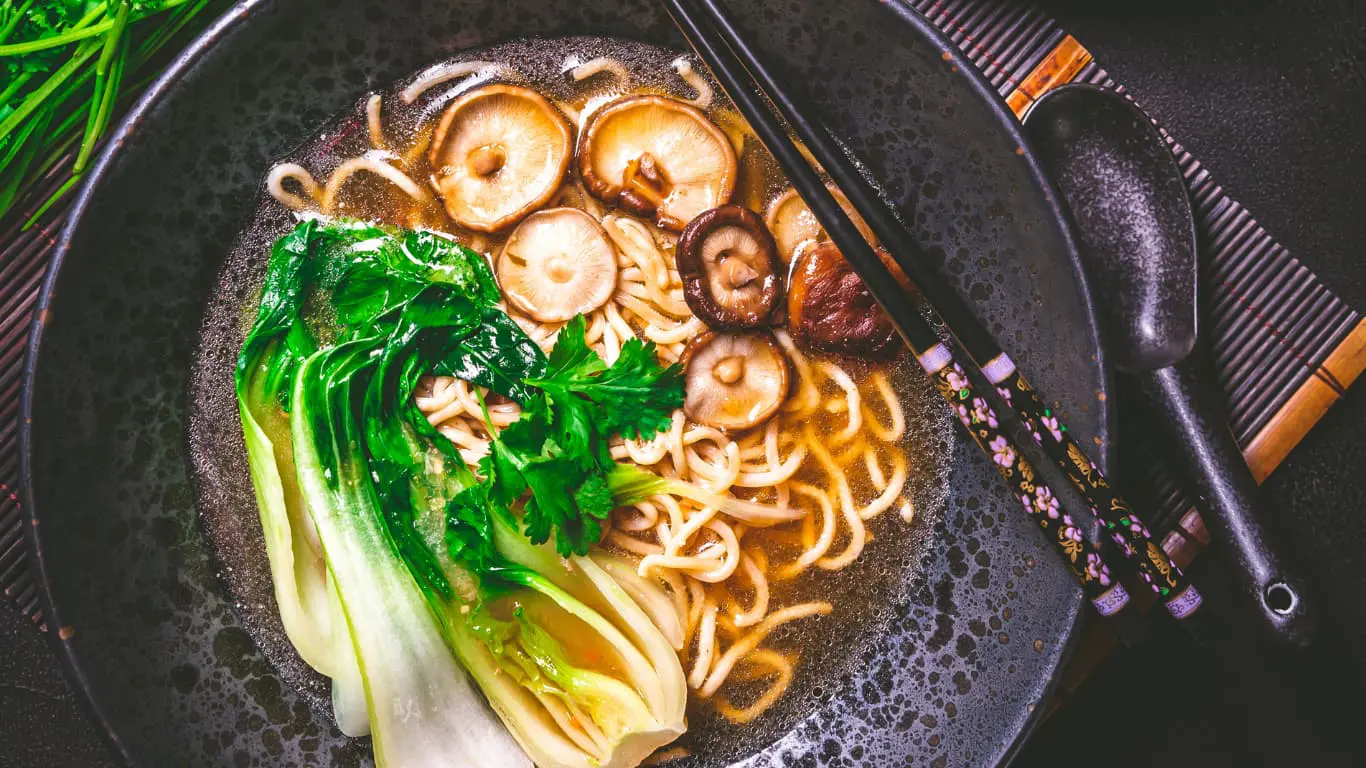THE SECRET TO UMAMI IS IN THE DASHI! LOOKING INTO DASHI IN RAMEN.
Published: Jan 20, 2023/ Last Updated:Jan 20, 2023
- 9 min read

Dear ramen fans across the country, how are you holding up during this cold winter weather? This season can make outdoor excursions seem like a chore, but it’s precisely this kind of weather that adds some extra flavor to a bowl of ramen. Ramen warms you up from the inside out, which is why we encourage you to enjoy it at home or at a restaurant during the cold winter season.
What is the star ingredient in ramen that makes it popular, especially during the cold winter season? The answer is in the ramen soup. In our previous blog post (see WHAT IS RAMEN? HOW THE HISTORY AND ELEMENTS LEAD TO MODERN-DAY RAMEN), we have mentioned that the soup is broadly divided into three components: dashi (soup stock), tare (sauce), and fat/oil. In this article, we would like to focus on the “dashi” element, which contains most of the umami flavor that influences our perception of ramen’s taste. By learning more about the umami in ramen, you’ll appreciate the depth of flavor and thus enjoy the dish to the fullest. So, let’s get started!
- Index
- History of “Dashi” in Japan
- How did the Japanese discover “umami”?
- What is “Umami Synergy?”
- The Transition of Dashi in Ramen
- Conclusion
■History of “Dashi” in Japan
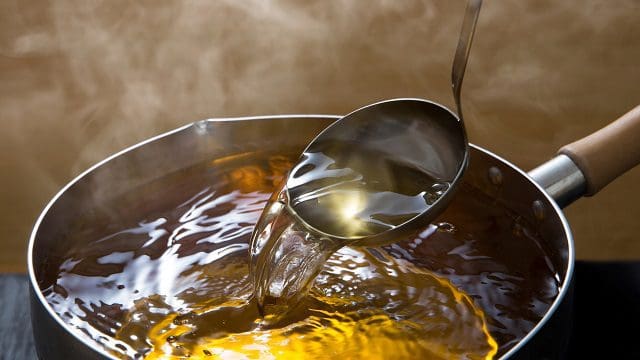
First, let’s start by unpacking the history of dashi (≒broth) in Japan, which dates back as far as the Jomon period (ca. 13,000–300 BC). Common foods of the time were mushrooms, shellfish, fish and meat, but they were difficult to eat raw, so the Jomon people came up with the idea of boiling the ingredients in earthenware. In doing so, they inadvertently stumbled upon the method of making broth, as the flavors of the different ingredients seasoned the water. This discovery is said to be the beginning of the dashi concept.
In Japan, the two most representative ingredients for dashi soup stock are kombu (kelp) and bonito, both of which appear in documents as early as the Nara period (710-794). At that time, kelp was used as a gift to the Imperial Court and bonito was used as a tax to be paid to the Imperial Court.
However, the term “dashi” itself did not become common until the Edo period (1603-1868), when it was discovered in cookbooks that were accessible to the general public. In addition to kombu and bonito, other commonly used ingredients for dashi are niboshi (dried sardines) and dried shiitake mushrooms. The process of smoking bonito was established in the Edo period, and eventually evolved into katsuobushi (dried bonito flakes), which allows higher preservability and more concentrated umami flavor.
The Japanese are known to be very particular about dashi for a good reason. Until around the early Edo period, eating livestock was taboo partly due to the widespread Buddhist principle against meat consumption. As a result, the diet of Japanese people consisted mainly of seafood, vegetables and grains such as rice. However, the umami of these foods was inevitably inferior to that of meat, so dashi was developed to supplement the umami of these ingredients.
■How did the Japanese discover “umami”?
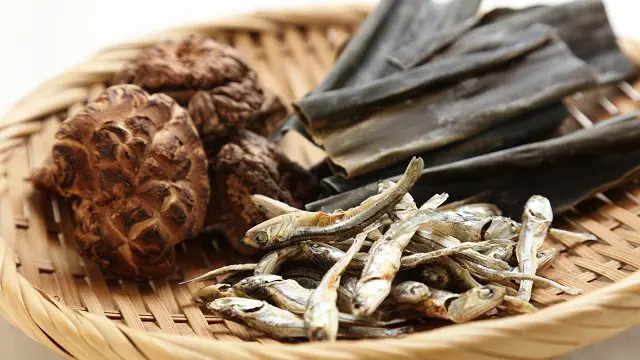
At the beginning of this article, we have mentioned that dashi contains a lot of “umami” flavor. Nowadays, people recognize umami as the fifth taste, following sweet, sour, salty, and bitter. Those familiar with cooking may also know that Kikunae Ikeda was the first to discover that the tongue could sense umami, and furthermore, that glutamic acid, a substance that indicates umami, exists. Here is a question that occurs to me. Why was Japan the first country in the world to discover the existence of umami? There may be a very interesting reason here. Let us explore this point in this chapter.
In fact, there are many cooking methods for different broths around the world, such as French bouillon and Chinese tāng (湯), that extract umami from ingredients by boiling them. However, Japanese dashi differs from other broths in that some of its ingredients – such as kombu and katsuobushi – are matured and contain a concentrated umami taste, which requires a shorter amount of cooking time to extract the flavor. In contrast, French bouillon, for example, is made by simmering raw ingredients such as beef, chicken, and fish together with vegetables over a long period of time. As a result, the bouillon contains various amino acids, which give it a complex flavor. In contrast, the Japanese techniques used to make dashi yield simple amino acids, consisting of the umami substances such as glutamic acid and inosinic acid.
We believe that this simpleness is the reason why Japan was the first country in the world to recognize umami. The simplicity of dashi and the umami structure in Japanese cuisine may have made it easier to distinguish the fifth taste from the others. Another factor in the equation is that Japanese water is soft, which facilitates the umami taste of kelp, shiitake mushrooms, katsuobushi, and dried sardines. In contrast, European water is often hard, which inhibits the extraction of umami from the ingredients. Europeans were unable to develop the technique of extracting umami in a short time, like in Japanese dashi. Instead, they are thought to have achieved a technique of boiling the ingredients for a longer time to bring out the umami flavor.
■What is “Umami Synergy?”
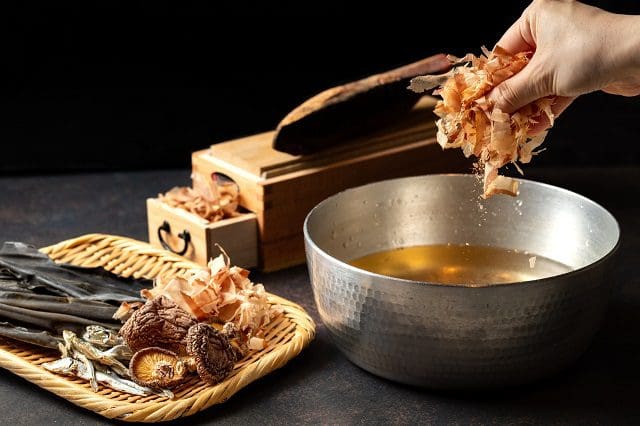
The well-known or common umami substances we hear today include glutamic acid, an amino acid-type substance found in kelp and vegetables; inosinic acid, a nucleic acid-type substance found in katsuobushi and meat; and guanylic acid, also a nucleic acid-type substance found in dried shiitake mushrooms. In fact, it has been scientifically proven that the combination of amino acid-based umami substances and nucleic acid-based umami substances dramatically increases umami taste by about 8 times, compared to using only one of these substances. This is called the “umami synergy”.
However, before this was scientifically proven, umami synergies were already in play around the world. In French bouillon, vegetables containing glutamic acid and beef containing inosinic acid are used in combination as ingredients, and Chinese tāng (湯) combines leeks and ginger containing glutamic acid and chicken containing inosinic acid. And in Japan, the technique of making dashi by combining kelp, which contains glutamic acid, and katsuobushi, which contains inosinic acid, was established empirically. This technique is called awase dashi, meaning, combined dashi, and is said to have been created in Osaka around the middle of the Edo period. It’s very interesting to note that although the countries and ingredients are different, they have instinctively arrived at a common technique for effectively extracting umami.
■The Transition of Dashi in Ramen
So far, we have delved into the details of dashi commonly used in Japanese cuisine, starting with its origins. Next, let us look at the type of dashi that the chefs in Japan use to create delicious ramen.
It is said that ramen was first created in Japan at the beginning of the 20th century. The soup used in the dish at that time is said to have been a combination of animal-based soup stock, such as chicken or pork bones, and shoyu tare (soy sauce-based seasoning). This means that soup stock made from kombu and katsuobushi, which have a long history and tradition in Japan, were not used in the early days of ramen. To be precise, kombu and katsuobushi were sometimes used in some ramen dishes as ingredients for dashi, but the original main ingredients were animal-based, such as chicken bones and pork bones.
This can be attributed to the fact that the ramen at “Rai Rai Ken,” considered Japan’s first ramen, was created by chefs from Guangdong Province in China. When they invented ramen, they came up with the idea of using a chicken broth based on Chinese cooking techniques and combining it with soy sauce-based shoyu tare to appeal to the Japanese tastes. This combination of Chinese soup stock and Japanese sauce was the original framework for the Japanese ramen we know today.
Since its creation, many variations of ramen emerged, and although seafood ingredients such as kombu, katsuobushi, and niboshi weren’t dominant in dashi except for some local ramen, it would be a long time before they were accepted as the standard. Chicken bones, pork bones and other animal-based ingredients reigned supreme until 1996, when seafood-based dashi stole the limelight. This came about with the founding of “double soup” by Yoshinori Haga, a ramen chef at “Chuka Soba Aoba” in Nakano Ward, Tokyo. The unique ramen combined the animal-based broth and the seafood-based broth into a multilayered phenomenon that grabbed the attention of customers from all over.
As mentioned before, the incorporation of seafood-based ingredients like katsuobushi and dried bonito flakes was nothing new by the mid-nineties, but what made the double soup innovative was that it mixed two separate broths: the animal-based broth (pork bone and chicken bones) and the seafood-based broth (katsuobushi and niboshi). In fact, since the optimal simmering time and temperature for extracting umami from animal ingredients differs from that of seafood ingredients, a method was devised to simmer them in different pots to maximize the umami of each broth and then combine them before serving to customers. This double soup is thought to have been the catalyst for the shift in popularity of seafood broth over animal broth.
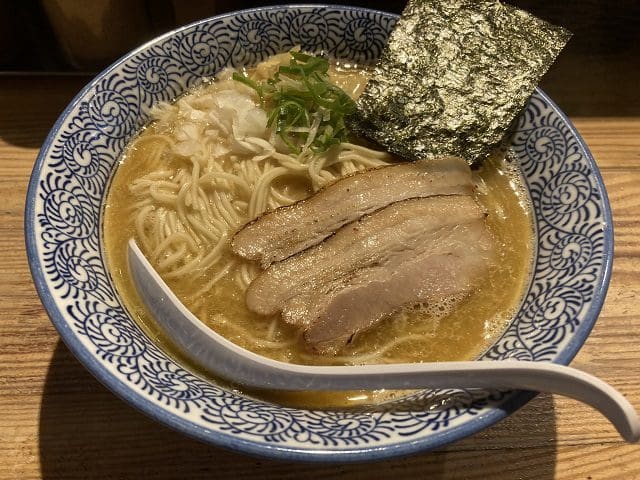
From then on, the creative ramen boom promoted an increase of ramen stores to favor seafood ingredients in their broths and gave way to many stores trying new flavors that make their soup stand out. Among these, we would like to focus on niboshi ramen, a local ramen from the Tsugaru region of Aomori Prefecture. Its popularity has spread throughout Japan, especially in Tokyo, and as its name suggests, its distinctive characteristic is that it highlights the taste of niboshi. Currently, niboshi ramen in Japan can be divided into two types of broths: clear broth and thick broth. The latter combines niboshi broth with chicken or pork bone broth and seems to be more popular in Tokyo. However, due to the prominent taste of niboshi in this ramen, some people do not like its distinctive smell and bitterness. It’s also for this reason that the fishy taste of niboshi ramen is not expected to succeed in the U.S. market. Regardless, we hope that with the recent boom in popularity of seemingly strong flavored ramen (like tonkotsu), niboshi ramen will be welcomed here in the future.
■Conclusion
Today, we took an in-depth look at dashi, an important element in making ramen soup. What did you think? We were personally impressed by ramen’s evolution from a Chinese animal-based soup with a touch of Japanese seasoning, to a modern seafood-based dashi that is uniquely Japanese.
Finally, we would like to conclude this article by introducing a recent trend in Japanese ramen dashi: shellfish, including hamaguri clams, asari clams, shijimi clams, and oysters. These contain a new umami element called “succinic acid,” which differs from that of the well-known glutamic acid and inosinic acid found in umami. This novelty seems to be attracting attention nowadays.
In addition to shellfish, there are countless examples of ramen restaurants using other unconventional ingredients for their dashi. To cite a few, there are ramen restaurants that use magurobushi (dried tuna flakes), sea bream, and shrimp as ingredients for their dashi. When it comes to animal-based dashi ingredients, there are also ramen restaurants that use duck.
Although many of the ingredients listed are rooted in the region of Japan, the exploration of ramen dashi is already beyond the scope of Japanese cuisine. There are ramen restaurants that have already adopted French fond de veau for their dashi. Other examples incorporate French techniques by chefs with a French background. When we explore these newly invented ingredients for dashi, we are reminded of how the Japanese enthusiasm for dashi brought about its amazing evolution.
As you can see, the ramen industry is still very much alive in Japan, and it’s possible that some of the new dashi flavors will soon make their way to the United States. In any case, paying attention to popular dashi ingredients is a very effective way to predict future ramen trends.
That is all for today’s content. We’ve prepared another topic for you next time that should delight all ramen lovers, so look forward to it!
Reference links:
出汁 – Wikipedia
湯 (中華料理) – Wikipedia
ブイヨン – Wikipedia
フォン (料理) – Wikipedia
Broth – Wikipedia
Stock (food) – Wikipedia
Soup – Wikipedia
Consommé – Wikipedia
Umami – Wikipedia
What Is Dashi, The Fastest Route To A Flavorful Meatless Broth | Bon Appétit
特定非営利活動法人 うま味インフォメーションセンター
うま味の相乗効果で料理をおいしくするテクニック! | まいにち、おだし。
What is Dashi? A Guide to Japan’s Integral Ingredient | Let’s experience Japan
What is Dashi? Everything You Need to Know About Japanese Soup Stock
How To Make Dashi だしの作り方 • Just One Cookbook
出汁をとるだけじゃない!「乾物」イロイロ、便利でおいしいレシピ集 | キナリノ
日本のだし文化っていつから?歴史を知って料理に活かそう|コラム|鰹節・だし専門店 通販のことならにんべんネットショップ
だしの歴史 – あごだし等の専門店 あご匠松井【直営・新鮮】
ダシはなんで美味しいのか?ダシの歴史を掘り下げてご紹介 | 業務用だし開発.com
だしの起源と変遷│33号 だしの真髄:機関誌『水の文化』│ミツカン 水の文化センター
中華そば青葉の公式HPにようこそ!
津軽ラーメン – Wikipedia
煮干しラーメン – イーコネクション株式会社
煮干しラーメンの発祥は青森!津軽ラーメンの元祖のお店はどこ? | 人生やり直しバイブル
青森「煮干しラーメン」・元祖の店から注目の進化系まで食べ歩きの旅│観光・旅行ガイド – ぐるたび
東京「煮干しラーメン」ブームの裏にある暗闘 | 井手隊長のラーメン見聞録 | 東洋経済オンライン | 社会をよくする経済ニュース
ラーメン界に「貝だし」ブーム到来 東京「琥珀」大躍進に見る業界の期待と憂い(1/3)〈AERA〉 | AERA dot. (アエラドット)
2021年ラーメントレンドを総括! 大崎裕史たちが“進化・変化元年”と呼ぶ今年の注目ジャンル&キーワードは? – FASHION BOX
進化し続けるラーメン!専門家に聞いた「今年のトレンド麺」と注目の3店 – LIVE JAPAN (日本の旅行・観光・体験ガイド)
ラーメン見聞録「最近のラーメンの貝出汁」について考察 – フードマニア Food Mania by 旭屋出版
マグロ!エビ!アサリ!スープにこだわる魚介系ラーメン8選|ウォーカープラス
ダシにこだわった渾身の一杯!いま注目の「だし推しラーメン」6選 | 街ニュース | 新潟の街ニュース&ローカル情報 Komachi Web(こまちウェブ)
全国ご当地ラーメン – ラーペディア – 新横浜ラーメン博物館
シェフの技あり個性あり。フレンチ仕立ての創作ラーメン「麺や一途」 | NACORD(ナコード)
通も唸る「フレンチラーメン」4選 シェフこだわりの濃厚スープにやみつき
